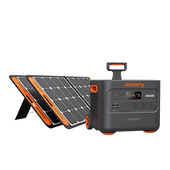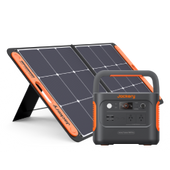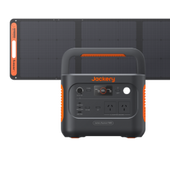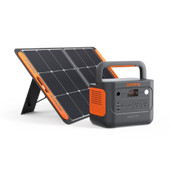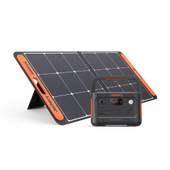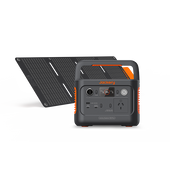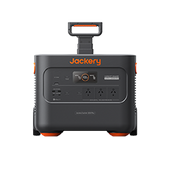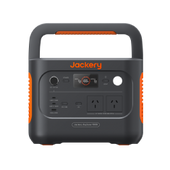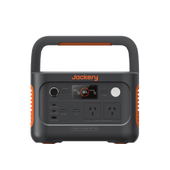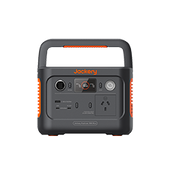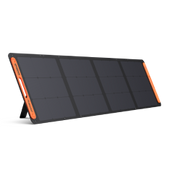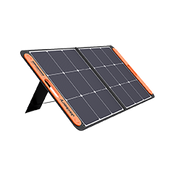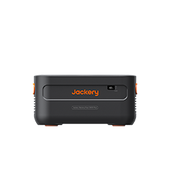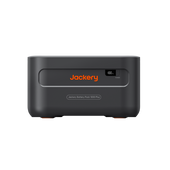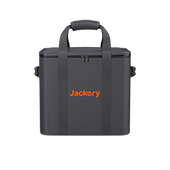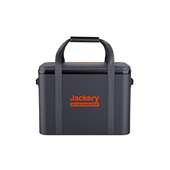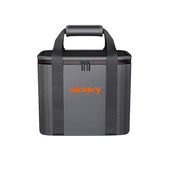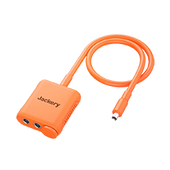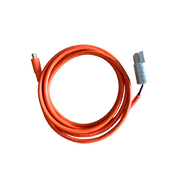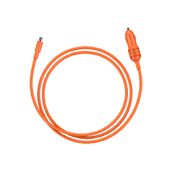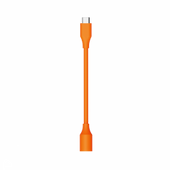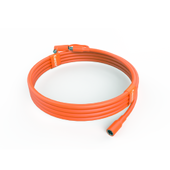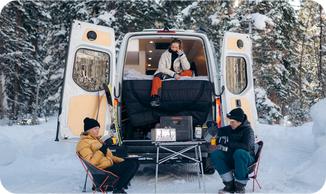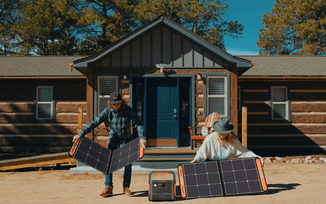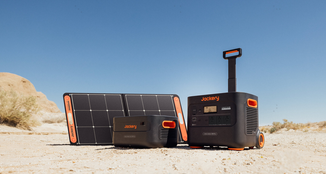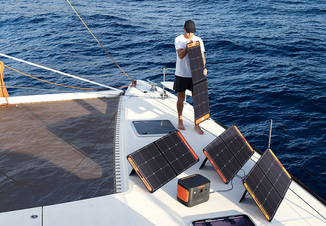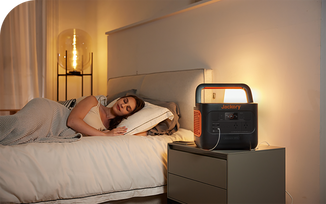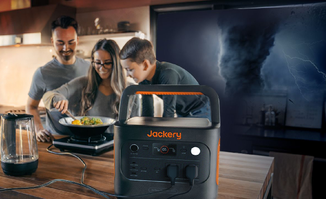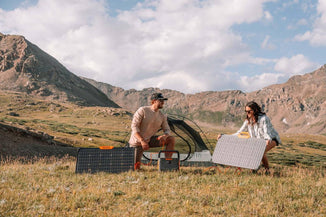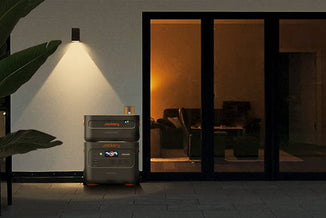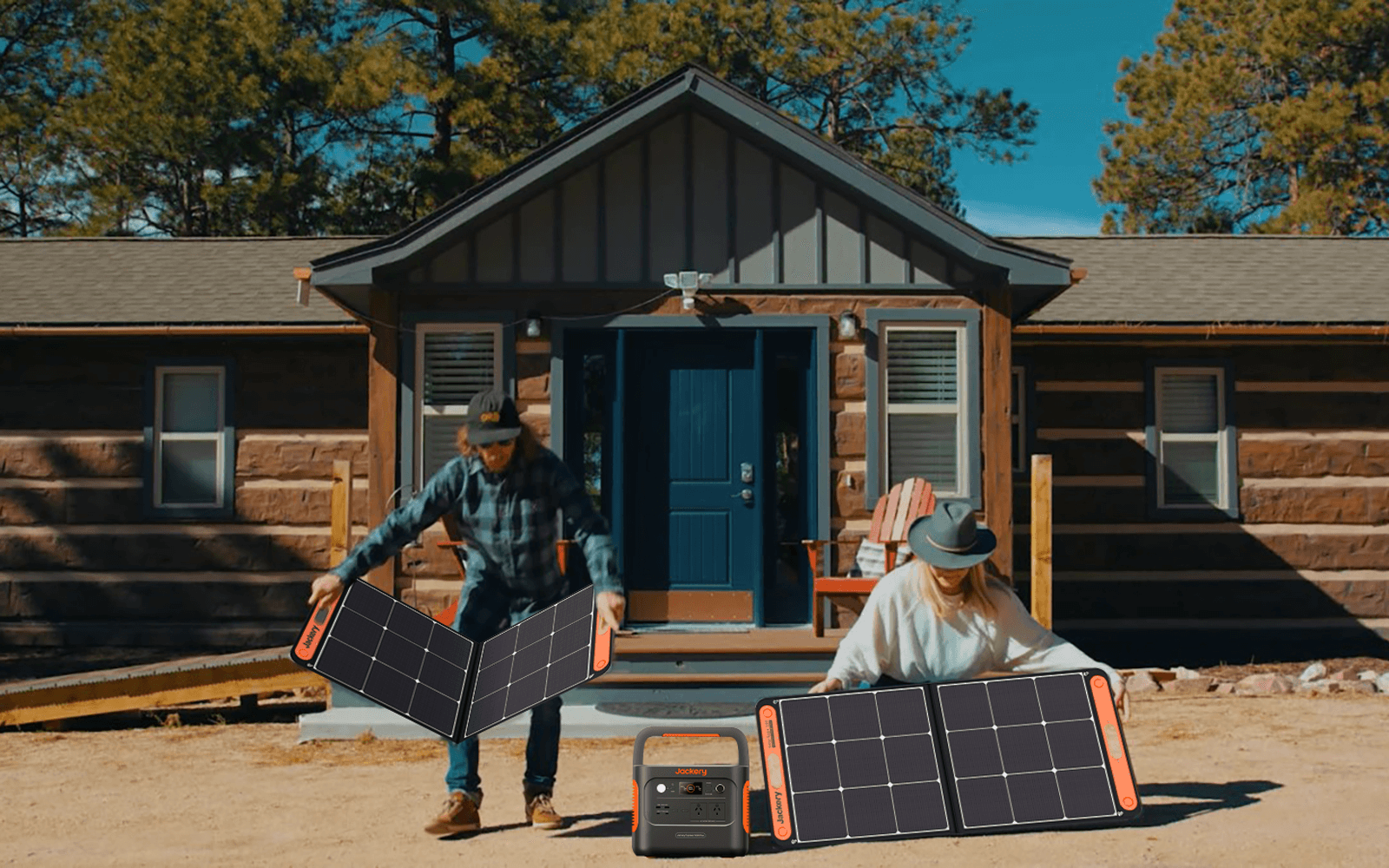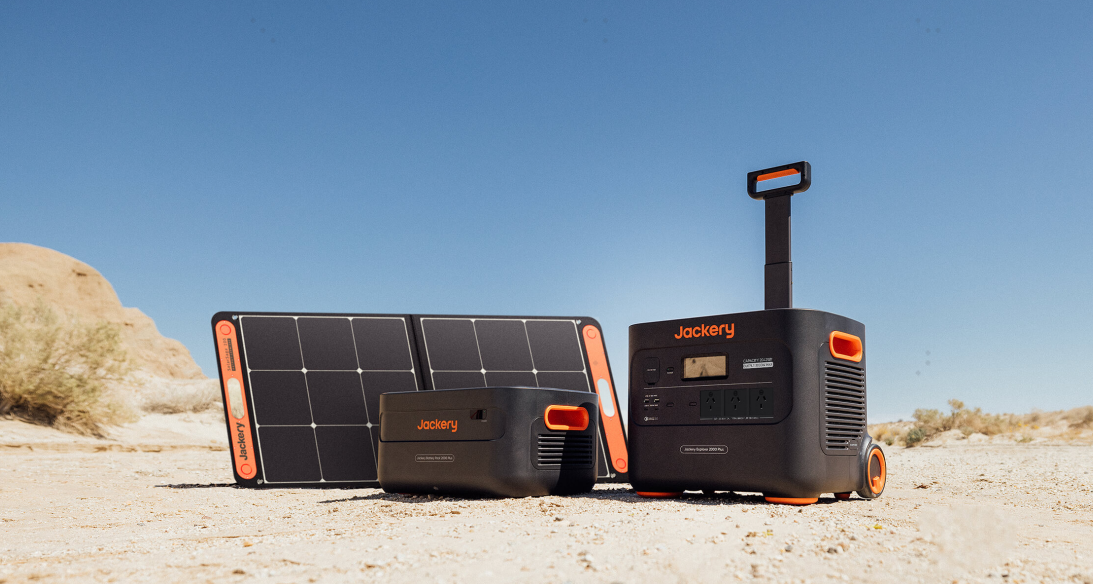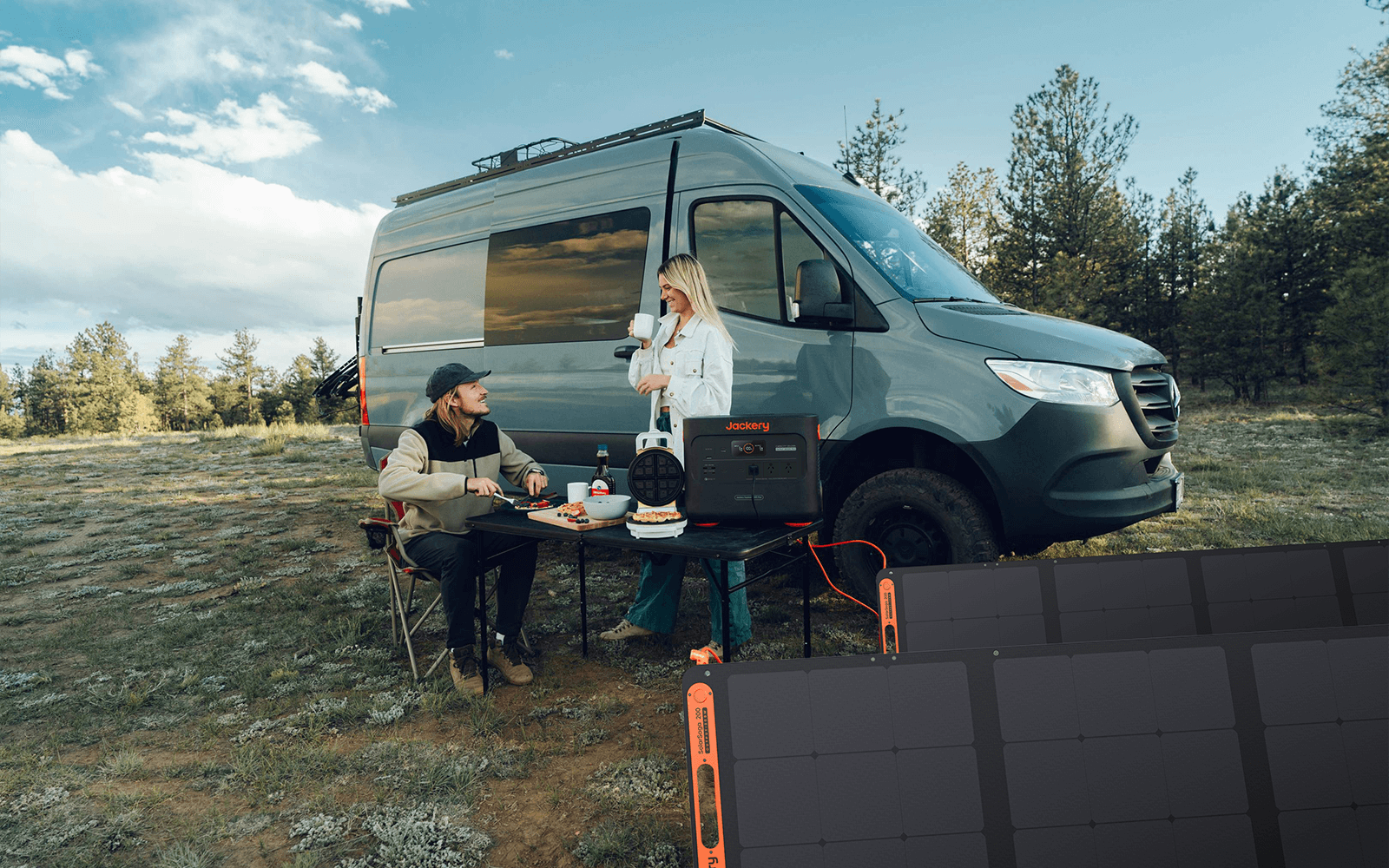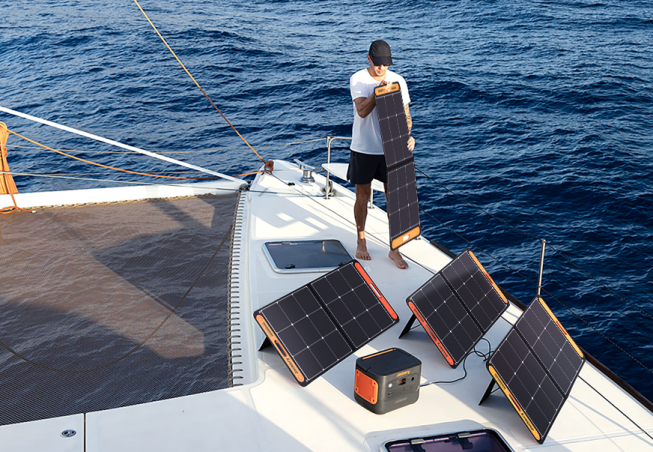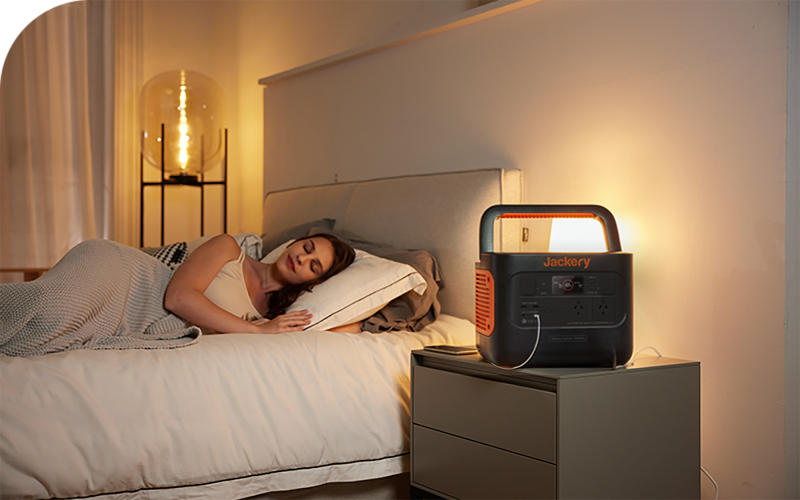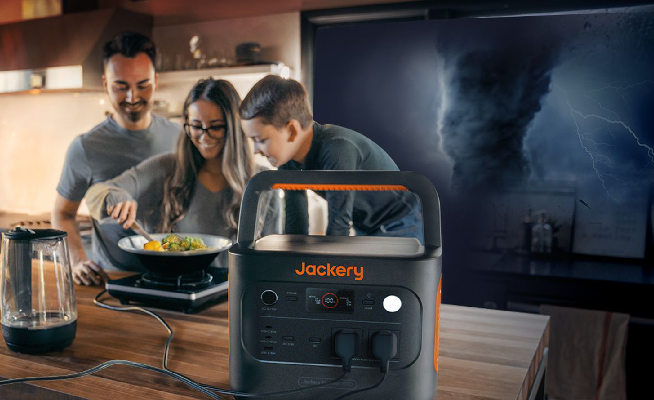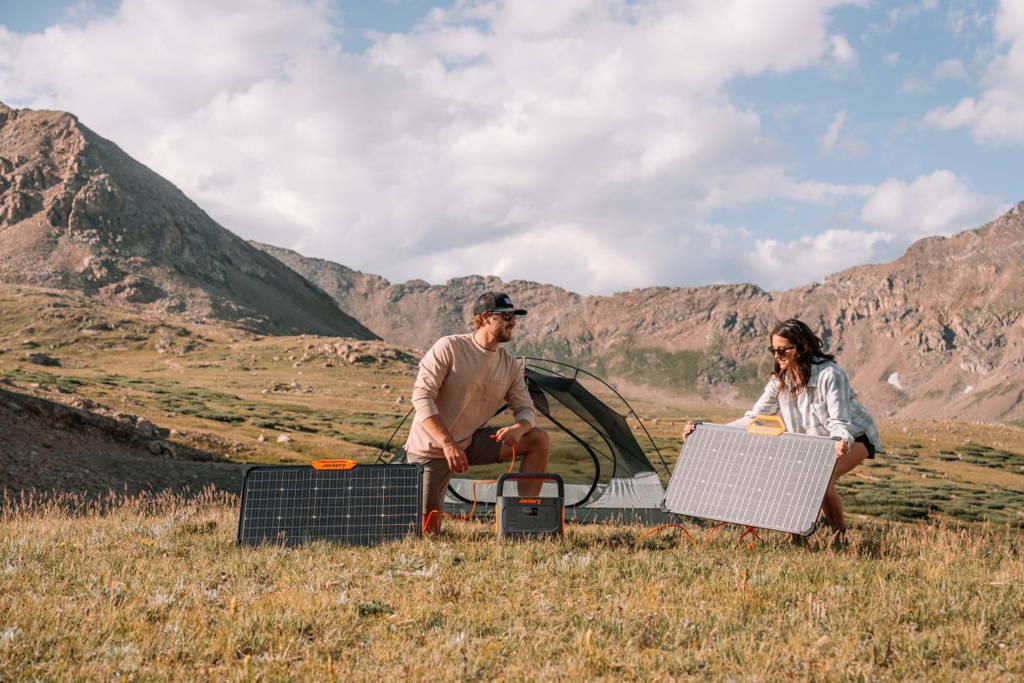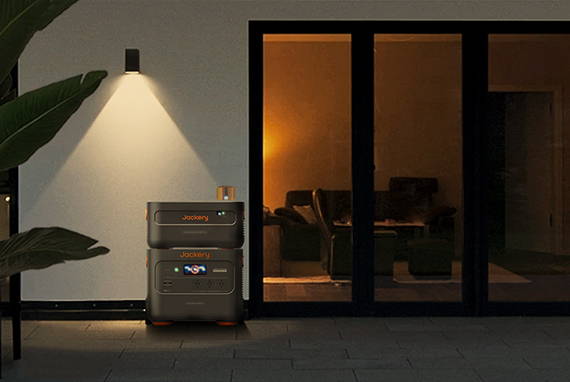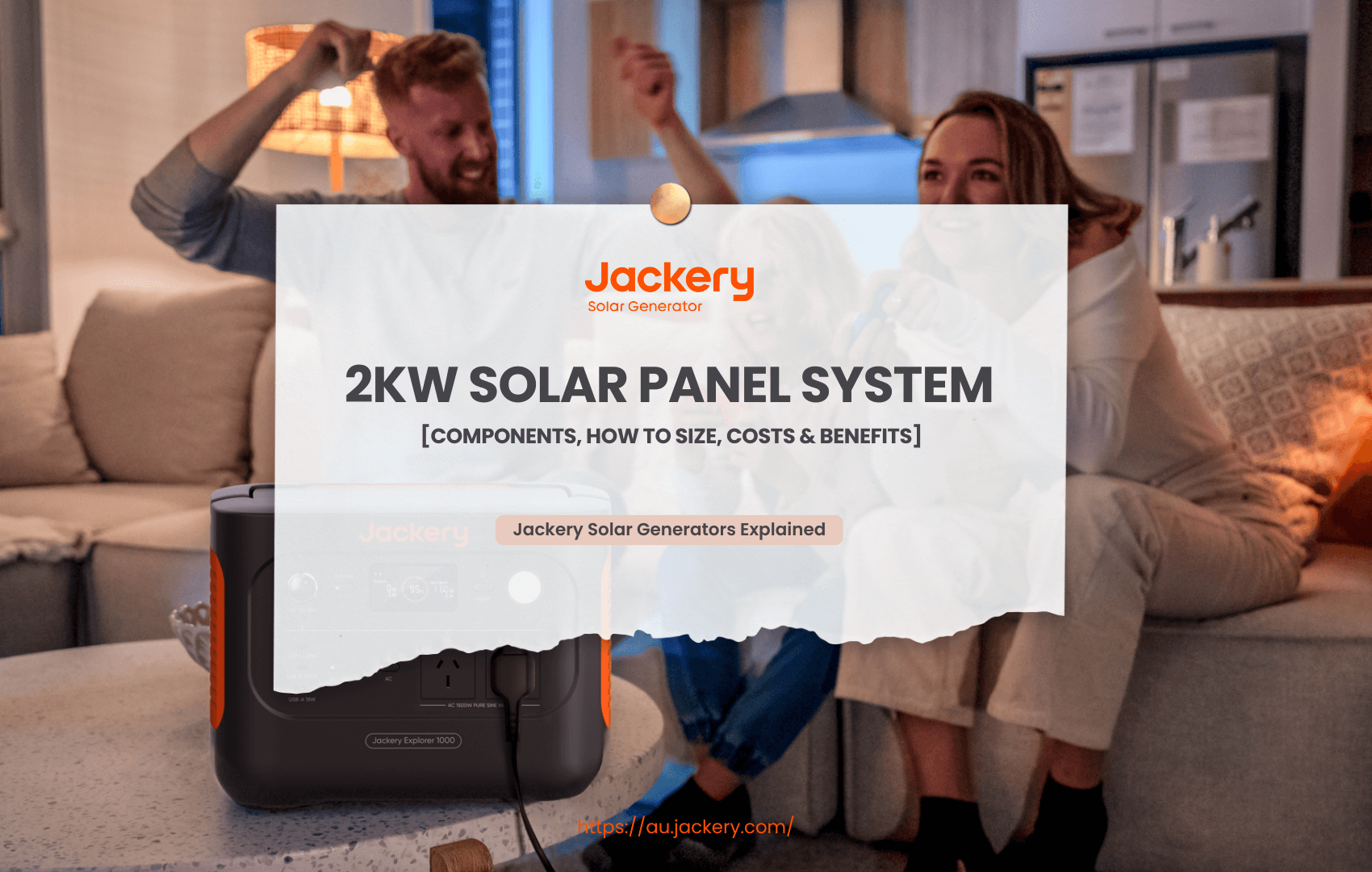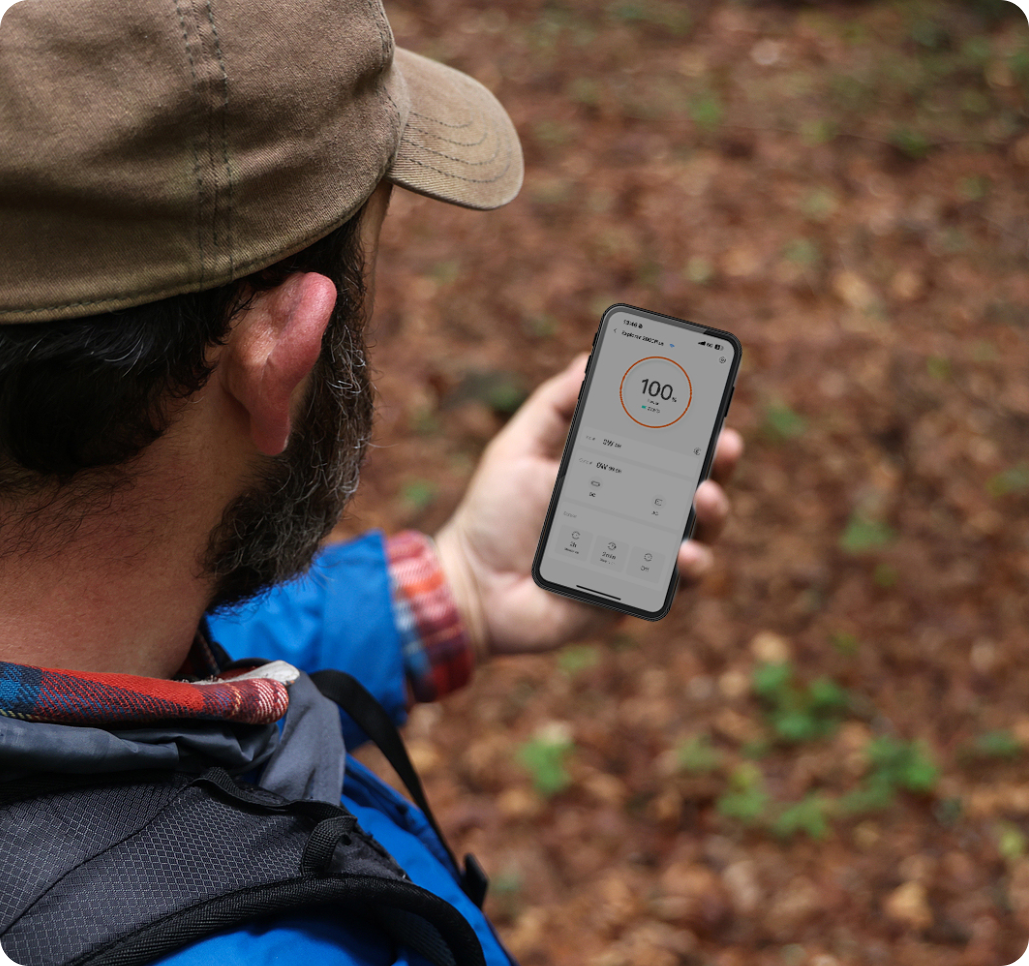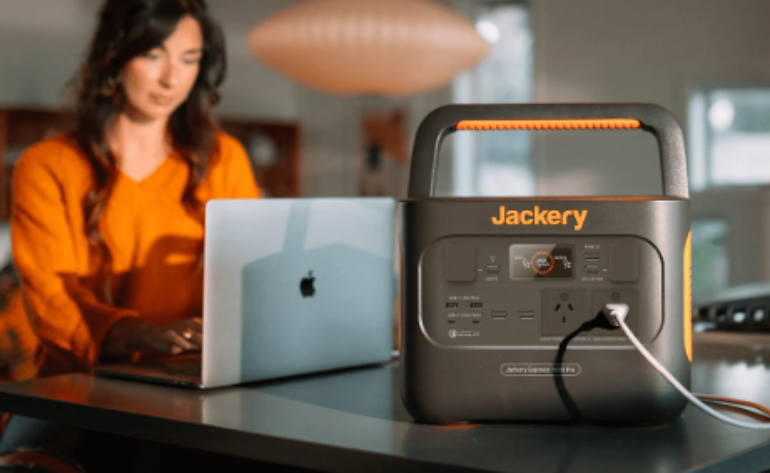|
Key Takeaways: |
|
- The cost of running a dryer in Australia varies greatly depending on the model, with heat pump dryers being the most energy-efficient and cost-effective over time. - Running a conventional vented dryer for an hour might cost between $1.00 and $1.40, depending on your electricity tariff. - Although more expensive up front, heat pump dryers can reduce running costs to as little as $0.33 per load. - Choosing energy-saving features like moisture sensors, reverse tumbling, and auto shut-off can reduce power usage. - Running your dryer during solar production hours, drying complete loads, and performing routine maintenance are all effective strategies to save expenses and improve efficiency. - We recommend Jackery Explorer 1000 Plus or 2000 Plus portable power station to power your dryers and other appliances effectively. |
Types of Dryers
Dryers have become an essential appliance in many Australian homes, offering a convenient and efficient way to dry clothes, especially during wet or colder months when outdoor drying is impractical. With modern advancements in technology, dryers today are designed to dry garments quickly, protect fabrics and reduce energy consumption.
In Australia, where the climate varies significantly from region to region, selecting the correct type of dryer is an important decision that depends on household needs, space availability, energy efficiency preferences, and budget. From basic vented models to sophisticated heat pump dryers, a wide range of options suit different living situations - whether in a compact apartment or a spacious family home. Understanding the various types of dryers and how they work can help you make an informed choice that fits both your lifestyle and your long-term costs.

Vented Dryers
Vented dryers are among the most frequent and inexpensive types of dryers accessible in Australia. They heat air and pass it through wet garments to extract moisture vented outside via a duct.
One of the primary benefits of vented dryers is their low initial cost, making them an appealing choice for frugal households. However, they consume more electricity than current technologies and require enough ventilation to prevent moisture buildup indoors. Vented dryers are ideally suited for homes with an existing ventilation system, such as an external wall or window nearby. Vented dryers in Australia typically cost between $500 and $700 AUD.
Condenser Dryers
Condenser dryers provide greater positioning flexibility because they do not require an external vent. Instead of releasing moist air outside, these dryers capture moisture from clothing and condense it into water, either stored in a tank or drained.
The primary benefit of condenser dryers is that they can be installed in almost any place, even in flats and rooms with no external ventilation. On the negative, if not adequately vented, they can raise the humidity level in the laundry room and use more energy than heat pump dryers. Condenser dryers typically cost $800 to $1,500 AUD.
Heat Pump Dryers
Heat pump dryers are among the most energy-efficient drying options available on the Australian market today. Compared to conventional dryers, they use a heat pump mechanism to recycle hot air, which drastically lowers energy use. The major benefits of heat pump dryers include lower long-term running costs and a gentler drying process that is better for clothes.
However, these dryers usually come with a higher initial purchase price and often have longer drying times than vented or condenser models. Heat pump dryers are ideal for households that use their dryer frequently and want to reduce energy usage over time. In Australia, heat pump dryers are generally priced between $1,500 and $3,000 AUD.
Gas Dryers
While less prevalent in Australia than electric machines, gas dryers use gas to heat the air, resulting in a speedier and more efficient drying process. They are particularly appealing to homeowners with an existing gas connection since they can provide cheaper recurring energy bills than electric dryers.
The primary benefits of gas dryers include shorter drying times and a reduced need for power. However, they require professional installation and access to a gas connection, which might raise the initial setup costs. Gas dryers typically cost between $1,600 and $4,000 AUD.
Washer-Dryer Combos
Washer-dryer combo machines combine the washing and drying tasks into one machine, making them ideal for residences with limited space, such as apartments or tiny townhouses. The primary advantage of a washer-dryer combo is the simplicity of having one appliance handle both functions, saving space and time.
However, these devices often have smaller capacities than standalone machines and longer cycle durations, particularly while drying. Washer-dryer combos are ideal for individuals or small homes with light laundry requirements. In Australia, they usually cost between $1,000 and $2,500 AUD.
Choosing the Right Dryer
When choosing a dryer, you should consider how frequently you will use it, how much room you have available, and your long-term budget for operating costs. If you expect to use the dryer regularly, investing in a heat pump dryer could save you a lot of money over time due to its energy efficiency; for people who live in apartments or homes without outdoor vents, condenser dryers or washer-dryer combos provide additional freedom.
Budget-conscious purchasers may select vented dryers due to their reduced initial cost, but they should be aware of the higher ongoing costs. Finally, a gas dryer may result in faster drying periods and lower power expenditures if your home already has a gas connection.
|
Type of Dryer |
Advantages |
Disadvantage |
Typical Price Range (AUD) |
Best For |
|
Low upfront cost; simple to operate |
Higher energy consumption; requires external venting |
$500-$700 |
Homes with existing venting solutions and occasional dryer use. |
|
|
Condenser Dryer |
No need for external venting; flexible installation options |
Can increase humidity indoors; uses more energy than heat pump models |
$800-$1,500 |
Apartments or homes without venting capabilities. |
|
Heat Pump Dryer |
Extremely energy-efficient; gentler on fabrics |
Higher purchase price; longer drying times |
$1,500-$3,000 |
Households that frequently use a dryer and want to save on energy costs. |
|
Gas Dryer |
Faster drying times; lower electricity usage |
Requires a gas connection and professional installation |
$1,600-$4,000 |
Homes with an existing gay connection need quick, efficient drying. |
|
Washer-Dryer Combo |
Space-saving: ideal for small living spaces |
Smaller load capacities; longer wash/dry cycles |
$1,000-$2,500 |
Apartments and homes with limited laundry space. |
How Much Electricity Does a Dryer Use?
Depending on the type of dryer and the energy efficiency of the model, the amount of electricity that a clothes dryer in Australia consumes can vary:
Vented Dryers: These traditional models consume approximately 2.4 to 4.8 kilowatt-hours (kWh) per load.
Condenser Dryers: These units typically use between 2.8 to 5.5 kWh per load.
Heat Pump Dryers: Known for their energy efficiency, these dryers use about 1.3 to 2.4 kWh per load, making them the most energy-efficient option.
What Voltage and Amperage Does a Dryer Use in Australia?
Understanding the electrical requirements of your dryer is crucial for safety and efficiency:
Voltage: The vast majority of electric dryers in Australia are powered by a 240-volt circuit, which is precisely the same voltage as the standard household voltage.
Amperage: Electric dryers typically draw between 20 and 30 amps of current by themselves during operation. Due to the significant amount of electricity required for heating elements, this greater amperage is necessary.
|
Dryer Type |
Energy Consumption per Load(kWh) |
Voltage Requirement |
Typical Amperage |
|
Vented Dryer |
2.4-4.8 kWh |
240V |
20-30 amps |
|
Condenser Dryer |
2.8-5.5 kWh |
240V |
20-30 amps |
|
Heat Pump Dryer |
1.3-2.4 kWh |
240V |
10-20 amps |
How Much Does It Cost to Run a Dryer?
The cost of running a dryer in Australia varies depending on the dryer type, energy efficiency, and consumption patterns. Electricity tariffs vary by state and supplier, often ranging between 25 and 45 cents per kilowatt-hour (kWh). The following is a breakdown of anticipated energy usage and associated expenses for various dryer types:
Estimated Energy Consumption and Costs by Dryer Type
|
Dryer Type |
Energy Use per Load (kWh) |
Estimated Cost per Load ($AUD) |
Monthly Cost (12 Loads) |
Yearly Cost (144 Loads) |
|
Vented Dryer |
4.0-5.0 |
$1.00-$1.25 |
$12.00-$15.00 |
$144.00-$180.00 |
|
Condenser Dryer |
3.5-4.5 |
$0.88-$1.13 |
$10.56-$13.56 |
$126.72-$162.72 |
|
Heat Pump Dryer |
1.5-2.5 |
$0.38-$0.63 |
$4.56-$7.56 |
$54.72-$90.72 |
Calculations are based on an average electricity rate of 25 cents per kWh.
Let's assume you use a vented dryer with an average energy consumption of 4.5 kWh per load, and your electricity rate is $0.30 per kWh:
Cost per Load: 4.5 kWh x $0.30 = $1.35
Monthly Cost (12 loads): $1.35 x 12 = $16.20
Annual cost (144 loads): $1.35 x 144 = $194.40
In contrast, if you use a heat pump dryer with an average consumption of 2.0 kWh per load:
Cost per Load: 2.0 kWh x $0.30 = $0.60
Monthly Cost (12 loads): $0.60 x 12 = $7.20
Annual cost (144 loads): $0.60 x 144 = $86.40
This illustrates that a heat pump dryer can save you more than $100 per year when compared to a vented dryer, emphasising its long-term cost-effectiveness.
What Is the Cheapest Dryer to Run?
Heat pump dryers are the most energy-efficient and economical choice available. They use modern technology to recycle heat during drying, resulting in significant energy savings. While the initial costs may be higher, the long-term savings on electricity bills make it a beneficial investment.
According to the Australian Government's Energy Rating Calculator, some heat pump dryers have a 10-year operating cost of as little as $510.61. Understanding the energy consumption and prices of various dryer types allows you to make informed selections that result in significant savings and reduced environmental impact.
What Energy-Saving Features Should I Look for When Buying a Dryer?
When buying a new dryer, you should consider more than simply the price. Choosing an energy-efficient model will help you save money on power while also reducing your environmental impact.
From innovative drying technologies to user-friendly settings, the proper features can significantly improve your dryer's efficiency. In this part, we'll review the essential energy-saving features to look for when purchasing.

High Energy Star Rating
In Australia, home appliances are required to have an Energy Rating Label that is rated using a star system. Having more stars means that you are using less energy. On average, a dryer with six stars consumes significantly less power than one with two stars. It is important to always compare dryers of comparable sizes based on their star ratings.
Heat Pump Technology
Heat pump dryers are currently the most effective type available regarding energy efficiency. Instead of continually heating incoming air, they recycle the already warm air. Traditional vented dryers consume up to sixty percent more energy than these dryers, even though heat pump dryers are initially more expensive.
Sensor Drying (Moisture Sensors)
Dryer sensors monitor the quantity of moisture in the garments and stop operating once they are totally dry. This prevents the clothing from drying too quickly, saving power and protecting them. It is superior to dryers with only a timer, which may continue to operate without being used.
Auto Cool-Down Cycles
Some dryers can complete the cycle with a cool air phase, eliminating the requirement for prolonged heat and saving energy.
Eco or Energy-Saving Modes
There is a unique "Eco" setting on several more recent models designed to limit the amount of electricity used. Even though these cycles may take longer, they consume significantly less energy overall.
Reverse Tumbling Action
Clothes are dried more evenly and quickly when tumbled in a dryer that falls in both directions. This results in the machine running for a shorter time, saving power.
Lower Heat Settings
Having the ability to select lower drying temperatures reduces energy consumption, which is especially beneficial for drying lightweight or sensitive things.
Delay Start Feature
In the event that your electricity provider offers lower off-peak rates, you can program the dryer to operate at times when the cost of electricity is lower, which is typically overnight.
How to Reduce Your Dryer's Energy Consumption?
Despite their simplicity, dryers can be among the most energy-intensive household equipment. You may save money, prolong the life of your clothes, and drastically lower your dryer's energy use by making a few wise decisions and minor changes to how you use it. Here are five practical strategies to increase the energy efficiency of your dryer.

Tip 1: Choose an Efficient Dryer
Invest in a heat pump dryer, which consumes a lot less energy than conventional ones, or choose a dryer with a high energy star rating.
Tip 2: Spin Clothes Thoroughly Before Drying
To cut down on drying time, always use your washing machine's highest spin setting to get rid of as much water as possible before putting your items in the dryer.
Tip 3: Keep Loads Smart and Filters Clean
To preserve optimal airflow and efficiency, dry large, suitable-sized loads rather than multiple little ones, and be sure to clean the lint filter after each load.
Tip 4: Use Sensor or Low-Heat Settings
Utilise your dryer's low-heat or moisture sensor settings to prevent over-drying clothing and save energy.
Tip 5: Time Your Drying Wisely
If you have solar panels installed, use them to operate your dryer during the day whenever possible. You may also minimise the time it takes for your machine to dry clothing by partially air-drying them.
Can Solar Power Save Electric Bills?
Installing solar panels can significantly save your electric bill, particularly when used to power energy-intensive equipment such as laundry dryers. The actual savings vary depending on your region, energy usage patterns, and the size of your solar installation.

Average Annual Savings
Installing solar panels can save Australian households $800 to $2,000 yearly. Depending on usage habits and local electricity costs, a 6.6kW solar system can result in yearly savings ranging from $1,000 to $1,500.
Monthly Savings
According to case studies, homes that install solar panels can save $150 to $250 monthly on electricity bills, resulting in significant annual savings.
Lifetime Savings
Over the life of a solar panel system (usually 25 years), total savings can vary from $20,000 to $50,000 or more, making solar a reasonable long-term investment.
Impact on Dryer Running Costs
Solar energy can drastically cut your dryer's operating costs. For example, if running a heat pump dryer on grid energy costs between $0.33 and $0.59 per load, using solar power during daylight hours can effectively reduce this cost to almost nothing.
Let's assume:
You use your dryer 12 times per month.
Your dryer consumes 2.0 kWh per load.
Your electricity rate is $0.30 per kWh.
You have a 6.6 kW solar panel system.
Without Solar:
Monthly cost = 2.0 kWh x 12 loads x $0.30 = $7.20
Yearly cost = $7.20 x 12 = $86.40
With Solar (Daytime Use):
Electricity cost from solar = $0 per kWh
Monthly cost = $0
Yearly cost = $0
Annual savings = $86.40 on dryer use alone
Suppose you think installing a solar panel system consumes too much. In that case, you can consider a solar generator or portable power station, such as Jackery Portable Power Station, to power the dryer and other appliances since it can be refuelled by Jackery Solar Panels with unlimited free solar energy or recharge by wall outlets in off-peak times at home.
Jackery Portable Power Stations Explained
Jackery Portable Power Stations are designed to be lightweight and easy to carry, making them ideal for off-grid living, camping, RV trips, and emergency backup. Unlike gasoline generators, Jackery power stations produce no fumes and operate quietly, making them safe for indoor and outdoor use.
You can recharge Jackery Portable Power Stations using solar panels, wall outlets, or car chargers, offering flexibility in various situations. They come equipped with AC outlets, DC ports, and USB ports, allowing you to power a wide range of devices simultaneously.
Jackery incorporates multiple safety features like over-voltage protection, short circuit protection, and temperature control to safeguard your devices and the power station itself. They feature simple plug-and-play operation and transparent LCD screens displaying battery levels and power input/output.

Electric dryers are among the most energy-intensive household appliances, typically requiring 1500W to 5000W of power to operate. Even high-capacity models might not store enough energy to run a dryer for a significant amount of time. For example, a dryer consuming 3000W would drain a 2000Wh Jackery in under an hour (2000Wh / 3000W = 0.67 hours). However, with expandable capacity, you can use Explorer 2000 Plus and 1000 Plus to power some dryers.
|
Dryers |
Running Time |
|
|
Jackery Explorer 2000 Plus |
Jackery Explorer 1000 Plus |
|
|
Vented dryer (2400W) |
0.7-4H |
1.7H |
|
Condenser Dryer (2800W) |
0.6-3.4H |
1.4H |
|
Heat Pump Dryer (1300W) |
1.3-7.4H |
0.8-3.1H |
(*The working hours are only for reference; the actual working hours depend on your usage.)
Jackery Explorer 1000 Plus
The Jackery 1000 Plus is a versatile, high-capacity charging solution designed to charge various home or outdoor appliances whenever and wherever required. It is the ideal emergency home backup solution, offering high output to charge essential appliances such as lights and medical equipment like CPAP machines and refrigerators. Its robust and ergonomic design ensures your appliances stay powered up wherever you go.

With a capacity of 1264Wh and a 2000W output, the 1000 Plus supports 99% of devices. If the 1.25kWh capacity of the Jackery Explorer 1000 Plus isn't enough, you can expand it. You can add up to three battery packs to each Explorer 1000 Plus to take your total power up to 5 kWh. Although the Jackery Explorer 1000 Plus is not an exception to the general rule that portable power stations are utilitarian, it differentiates itself from the competition.
Charge directly from the sun or via a wall outlet conveniently, quickly, and worry-free. It took only 4.5 hours for the Explorer 1000 Plus to fully charge by connecting 4*SolarSaga 100W Solar Panels or via a wall outlet for 1.7 hours. Stay powered up and connected.
The Jackery 1000 Plus establishes new benchmarks for sustainability, being the first in the industry to receive verification from TÜV SÜD. Adopt green solar energy, which produces no fumes, pollution, or noise. Requiring no upkeep, it serves as your portal to sustainable living and a diminished carbon footprint while aiding in the preservation of the Earth.
Jackery Explorer 2000 Plus
The Jackery Explorer 2000 Plus is ideal for charging a dryer with expandable capacity. This powerhouse can hold up to five more battery packs and has a 12kWh capacity that can be expanded.

The Jackery Explorer 2000 Plus is a powerful portable power station with a large capacity (2042.8Wh) and a high AC output (3000W, with a 6000W surge peak). These features make it well-suited for charging kayak motors, which are typically electric and require AC power for their chargers.
Australia operates on a 230V/50Hz electrical system. The Jackery Explorer 2000 Plus has AC outputs of 230V, making it compatible with voltage. Electric dryers are very power-hungry appliances.
Most standard vented electric dryers in Australia consume between 2,500W to 5,000W while running. Some can have even higher starting (surge) wattage, potentially reaching 8,000W to 12,000W. While traditional vented dryers were common, energy-efficient heat pump dryers are becoming increasingly popular in Australia. These typically consume less power, ranging from 600W to 2,000W, which Jackery Explorer 2000 Plus can power.
The Jackery Explorer 2000 Plus offers a continuous AC output of 3000W. This is sufficient for some lower-power dryers, especially heat pump models. In a power outage, you might use it for a very short cycle with a low-power heat pump dryer for essential drying of a few items. If you have a very compact or specialised low-wattage dryer (like a spin dryer with minimal heating), the Jackery might be more suitable. Always check the exact power requirements of your specific dryer.
FAQs
The following are the frequently asked questions about the running costs of dryers.
1. How much does it cost to run a dryer for 1 hour?
Running a conventional clothes dryer for an hour in Australia typically requires roughly 4.6 kWh of power, which costs around $1.40, depending on your local electricity rates and the dryer's efficiency.
2. How much does it cost to have a tumble dryer on for 1 hour?
Operating a tumble dryer for an hour can cost between $0.94 and $1.17 each cycle, with energy-efficient types such as heat pump dryers costing as little as $0.33 to $0.59.
3. Do dryers use a lot of electricity?
Yes, clothes dryers are one of the most energy-intensive household equipment, especially when used often. However, selecting energy-efficient models with high star ratings can significantly reduce electricity use and expenditures.
4. How expensive is it to run a dryer?
The cost of running a dryer depends on its type and efficiency. For example, an average load in a typical dryer costs roughly $0.44, whereas energy-efficient devices can result in significant savings over time.
5. Is it normal for a dryer to take 2 hours?
A full load of laundry should take about 30 to 45 minutes to dry in the dryer. If your dryer takes 2 hours, it could be due to a clogged lint filter, limited ventilation, or mechanical issues that must be addressed.
Final Thoughts
Although dryers are convenient, their operating costs can quickly increase if not used correctly. Choosing a high-efficiency model, using solar electricity whenever possible, and exercising better drying practices can all significantly impact the process. Investing in a heat pump dryer or aligning your loads with peak solar generation might save you hundreds of dollars annually.
Simple procedures, including regularly cleaning the lint filter and using sensor drying, will help you save electricity. With a few simple tweaks, you may enjoy the convenience of a dryer without paying a hefty electricity bill.

